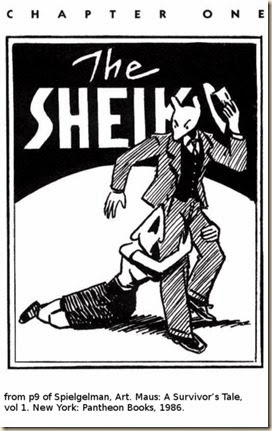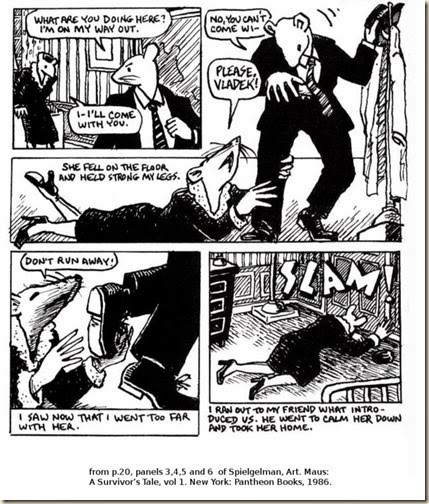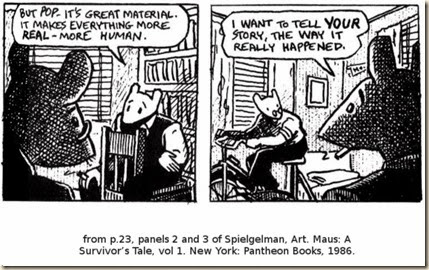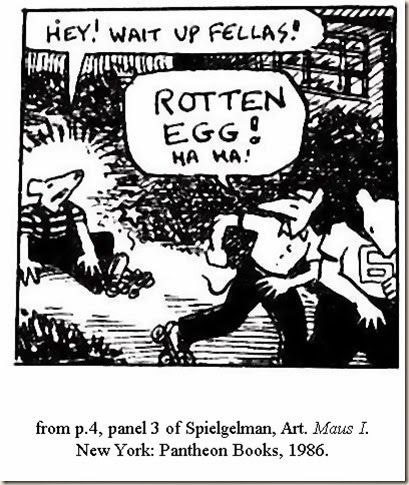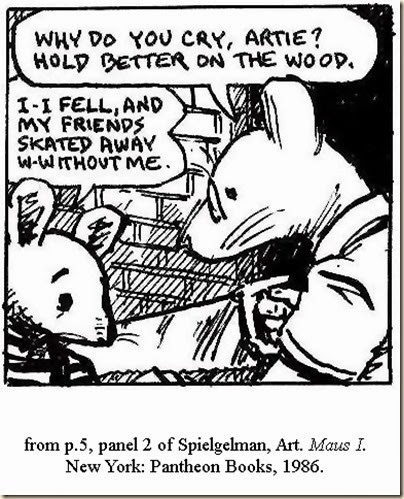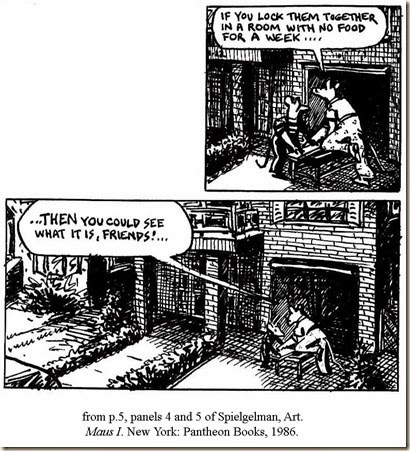by Corry Shores
[Search Blog Here. Index-tags are found on the bottom of the left column.]
[Central Entry Directory]
[Graphic Literature, entry directory]
[Spiegelman’s Maus, entry directory]
Art Spiegelman
Maus: A Survivor’s Tale, vol.1
Ch.1
The Sheik
Brief Summary:
Here we learn how Vladek, a Czech Holocaust survivor, moved to Poland to marry Anja, a wealthy Jewish girl, in 1939.
Summary
Art Spiegelman visits his father Vladek to interview him about his experiences as a Holocaust survivor. With Vladek is his second wife Mala.
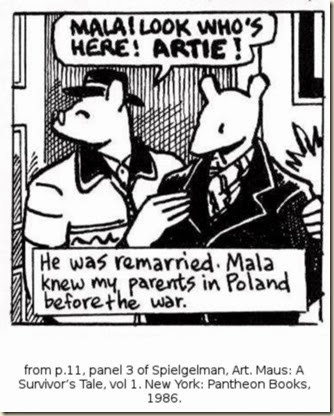 Art indicates that he wants to hear Vladek’s stories so he can draw them in a comic (the present one). Art wants to begin with how Vladek met his first wife, Anja, who is Art’s mother.
Art indicates that he wants to hear Vladek’s stories so he can draw them in a comic (the present one). Art wants to begin with how Vladek met his first wife, Anja, who is Art’s mother.
Vladek explains that he was selling textiles, and he was young and handsome. Woman were chasing after him.
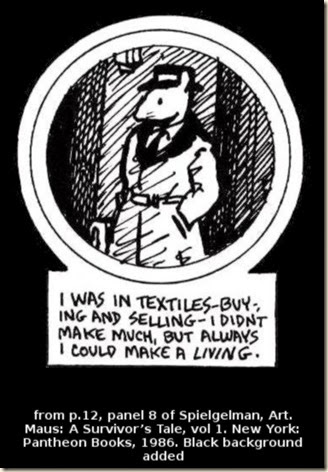 He took one lover, Lucia, but he did not want to marry her, partly because she did not come from a well-off family. Nonetheless, she was obsessed with Vladek.
He took one lover, Lucia, but he did not want to marry her, partly because she did not come from a well-off family. Nonetheless, she was obsessed with Vladek.
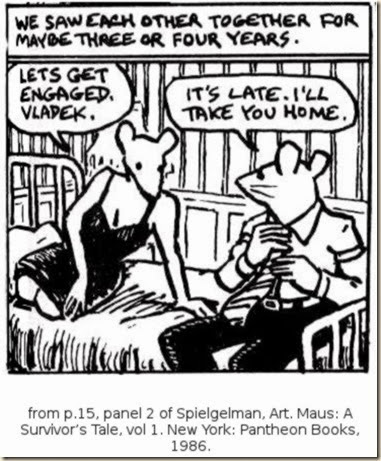 One holiday when visiting family, Vladek’s cousin suggests he meet a rich and clever girl, Anja. They do so and like each other very much.
One holiday when visiting family, Vladek’s cousin suggests he meet a rich and clever girl, Anja. They do so and like each other very much.
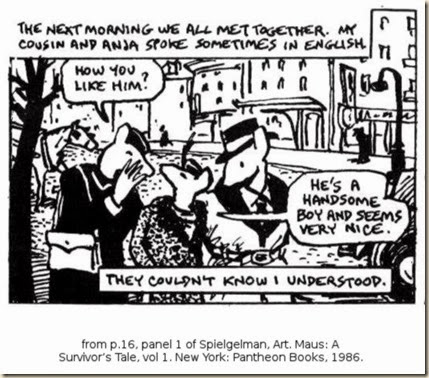
They spoke frequently on the phone and wrote each other letters. Lucia finds out and desperately tries to hold onto Vladek, but he leaves her for good.
Anja’s family were millionaires. One time when Vladek visited them for dinner, he snuck into Anja’s room and discovered a bottle of pills. He investigated what they were, and learned they were for nervousness. Later he moves from his home in Czechoslovakia to her home in Poland. Before leaving, Lucia literally falls to the floor begging Vladek not to go.
Lucia then sends a letter to Anja, saying that Vladek had a bad reputation in Czechoslovakia for having many girlfriends that he is just marrying Anja for her family’s money. Vladek explains that really Lucia cannot let go of him. He moves to Sosnowiec, Poland in 1936 and marries her 1937.
At this point, Spiegelman cuts back to the interview scene with Art and Vladek in the present. Vladek asks for the Lucia material to be left out, because it is personal and unrelated to the Holocaust. Art insists that this personal side is precisely what is needed.
Art promises not to include such private material. [[We might note here the shot-counter-shot dialogue pattern. First we see things from Vladek’s perspective, and all the while Art is saying that he wants to humanize the novel with Vladek’s most personal stories. Then it cuts to Art’s perspective, now looking objectively at Vladek, all while Art talks about telling Vladek’s story. Moves between panels are similar to montage cuts, and they likewise force our minds to make inferences and connections. Here we move from subjective to objective, which is itself just another’s subjectivity. Spiegelman is juggling these views, on the one hand getting us to see and feel what Vladek experienced, while also on the other hand getting us to look objectively at his life and experiences so we can better pass judgment on the situation. The animal depictions might function similarly. If the people were drawn more photo-realistically, we might feel repulsed by the gruesome imagery. So rendering them as cute animals allows us to increase our proximity to their experiences. However, their animal form makes them seem foreign to us somehow. We do not normally identify with animals in a very personal way. So as well their animal forms serve to grant us a more objective judgment based on an intimate understanding of their inner lives.]]
Spielgelman, Art. Maus: A Survivor’s Tale, vol 1. New York: Pantheon Books, 1986.





.jpg)




































